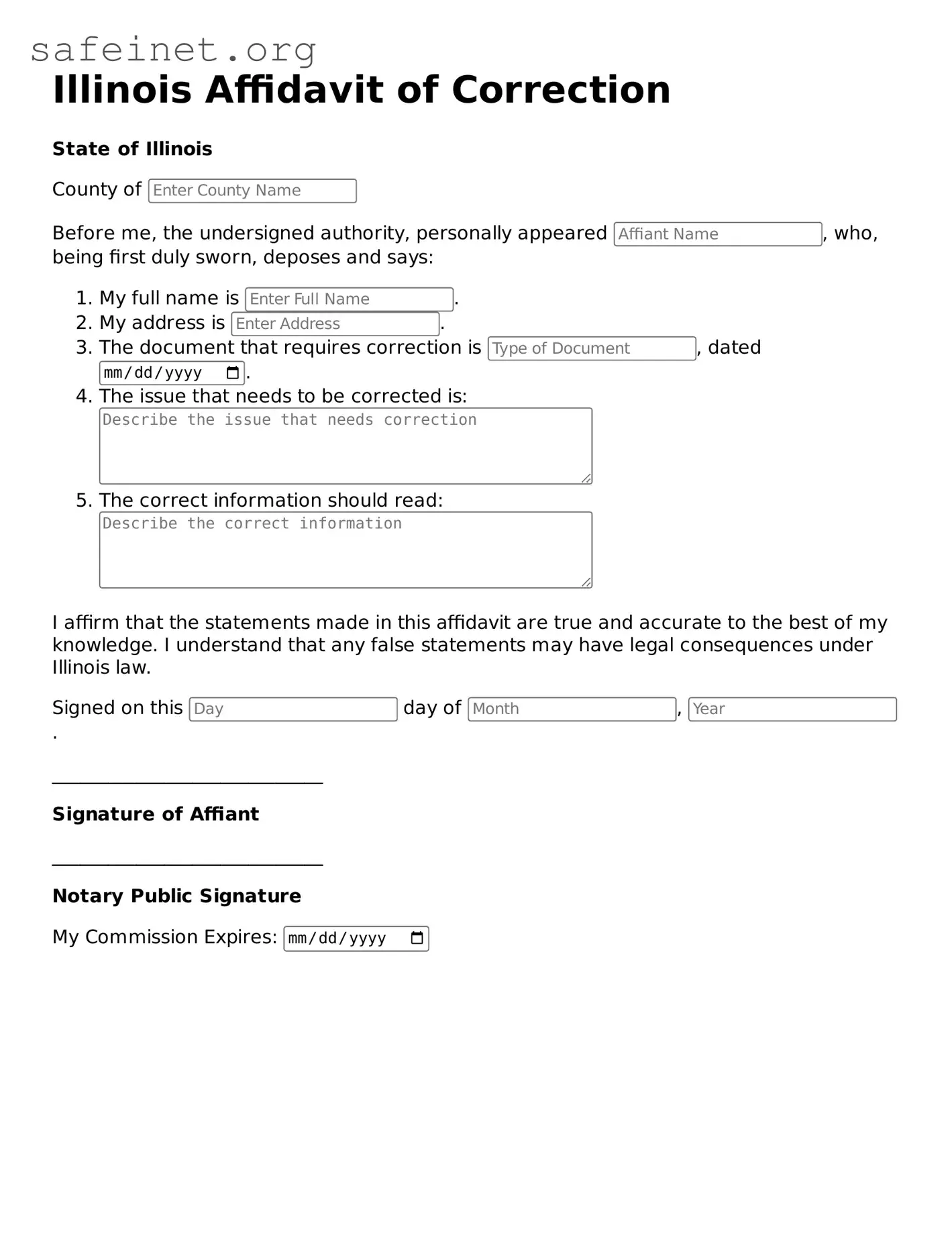The Illinois Affidavit of Correction form is similar to the Affidavit of Identity Theft. Both documents are aimed at correcting records; however, the Affidavit of Identity Theft specifically addresses discrepancies arising from fraudulent activity. Individuals use it to assert their identity has been wrongfully used by another party, helping to ensure that inaccuracies in public records due to identity theft are corrected.
Another comparable document is the Correction Deed. Used primarily in real estate transactions, a Correction Deed rectifies errors or omissions in previously filed deeds. Like the Affidavit of Correction, it serves to clarify records but is focused on property ownership issues rather than general document discrepancies.
The Petition to Modify Name is another similar form. It allows individuals to legally change their name, addressing issues of identity and ensuring that all records reflect the individual's correct name. This document also shares the aim of ensuring accurate personal records, similar to the Illinois Affidavit of Correction.
The Declaration of Lost Instrument serves a parallel purpose in correcting records associated with lost financial documents, such as checks or stock certificates. This document affirms that the instrument has been lost and provides assurance to the parties involved that the record should be updated accordingly.
The Affidavit of Duplicate Title parallels the Affidavit of Correction in that it attests to the existence of a title that has been lost or misplaced. It allows for the issuance of a new title while ensuring that the existing records reflect this correction in property ownership.
Similar in intent, the Erroneous Notary Acknowledgment form addresses mistakes made by notaries. When a notary incorrectly certifies a document, the Erroneous Notary Acknowledgment is used to rectify the situation, ensuring that the notarized documents are accurate and uphold their legal standing.
The Certificate of Correction relates to corporate records and can amend errors in filed documents concerning a corporation. When corporations discover inaccuracies, this certificate is submitted to ensure that public records match the actual circumstances, just like the Affidavit of Correction does for other types of documents.
Lastly, the Revocation of Power of Attorney form is also relevant. It allows individuals to rescind a previously granted power of attorney, correcting any record showing that the attorney-in-fact still possesses authority. This ensures that the individual's current decisions are reflected in legal documentation, maintaining the integrity of personal records.
